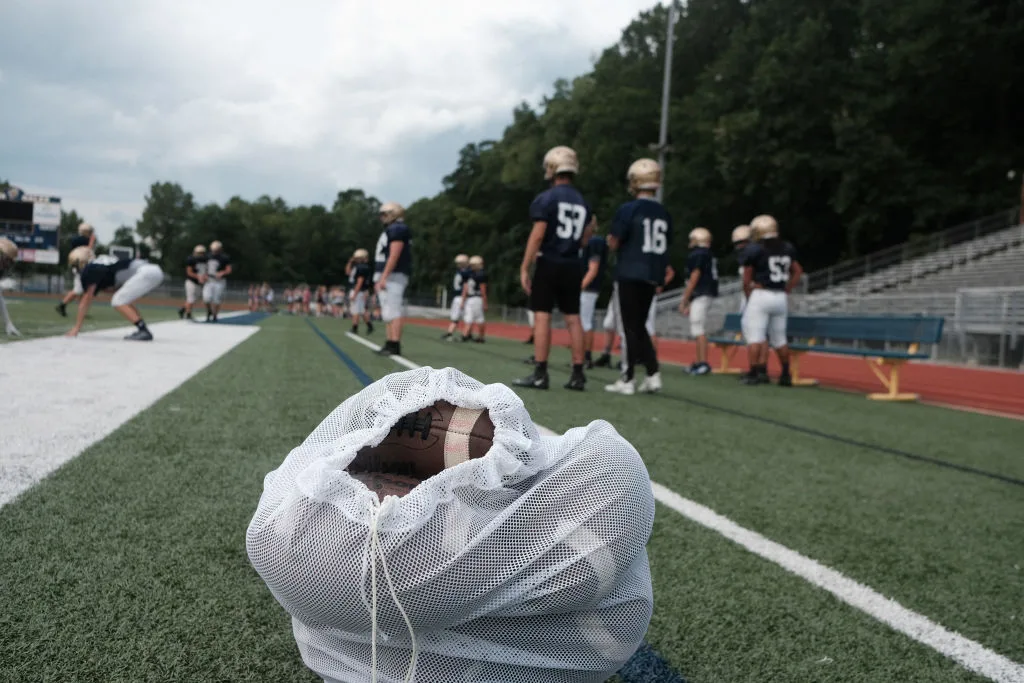
This story originally appeared at Stateline.
After two years of record-breaking heat that brought a surge of deaths and health emergencies, several states have enacted or are considering measures designed to protect residents — with a new focus on younger people whose vulnerability is rising with the temperatures.
Nationally, heat-related deaths rose from about 1,000 in 2018 to 1,722 in 2022 and 1,784 so far in 2023, according to a Stateline analysis of federal Centers for Disease Control and Prevention data. Those totals are likely an underestimate because heat waves make death more likely from other causes as well.
The Stateline analysis considered heat-related deaths in CDC epidemiological research, known as Wonder data, where heat is listed as a direct or contributing cause. But deaths caused by heat more indirectly are much higher. A New York City analysis last year, for example, found an average 360 heat-exacerbated deaths in the city annually compared with 10 caused directly by heat.
GET THE MORNING HEADLINES DELIVERED TO YOUR INBOX
Climate change is making the problem more urgent: Heat waves have been steadily rising in number and duration since the 1960s. States are responding with strategies that include public warnings, ice baths and cooling centers for those without air conditioning.
As climate change increases the number of extremely hot days, minority groups and people with low incomes will suffer disproportionately, said Samantha Artiga, director of racial equity and health policy at KFF, a national health policy think tank. A recent KFF report on heat-related deaths found the highest death rates were for Native American, Black and Hispanic people.
In a summer marked by extreme heat, some suggest it is time for a national cooling standard
“We know that while climate change and extreme heat pose risks for everyone, those risks are not felt equally,” said Artiga, who co-wrote the report.
In Colorado, heat waves are more common. State public health officials reported that 494 Coloradans visited an emergency room with a heat-related illness in 2022, according to The Denver Post. That’s well above the average of 368 from 2011 to 2022.
The summer of 2023 was the hottest on record globally, as was the 12-month period ending Oct. 31. A November report published in the medical journal The Lancet said worldwide heat-related deaths could nearly quintuple by 2050.
People 65 or older represent the bulk of deaths — 44% this year — but the youngest also are falling prey to heat. One in 10 heat-related deaths this year were people younger than 35. Among them: a 12-year-old California boy who died after running laps at school in August, a 19-year-old Kansas college football player and a 25-year-old Arizona farmworker who succumbed to the heat in July.
“Addressing increasing numbers of heat-related deaths is a likely reality that will require both new policy and awareness,” said Jesse Berman, an environmental epidemiologist at the University of Minnesota who studies health effects of climate change.
Twelve-year-old Yahushua Robinson died on Aug. 29 while running laps during a gym class at his middle school in Lake Elsinore, California. At the time of his death, state legislators were already considering a bill to give school athletic programs more resources to address heat-related injuries.
Assemblymember Kate Sanchez, a Republican representing part of Orange County, said she sponsored the bill to ensure that all schools, not just wealthy ones, have tools to prevent heat-related illnesses and deaths, such as ice baths and wet-bulb thermometers that measure temperature and humidity. It was signed into law last month.
“This law will help schools, especially in underserved areas, keep our students safe while they’re being healthy and active,” Sanchez said.
The 2016 death of Johnny Tolbert, a 12-year-old Georgia football player who collapsed during football practice, inspired the adoption of a South Fulton city ordinance that requires heat-related training for coaches and the placement of 150-gallon containers at parks that host athletic events. The containers must be filled with ice and water between April and September so that heat-stricken athletes can be immersed in them.
Georgia state legislators are considering a bill, based on the South Fulton ordinance, that would require every city and county park and recreational facility to have at least one container with a capacity of 150 gallons or more and to keep ice on hand between April and September — or whenever the temperature reaches 93 degrees or higher.
“Hopefully we can save the next child’s life and get them to a hospital,” said sponsor state Rep. Lydia Glaize, a Democrat who represents a suburban Atlanta district.
Cold-water immersion tubs also are required in Florida under a 2020 state law.
In the nation’s hottest and most arid states, heat-related deaths have soared.
Arizona had 529 heat-related deaths in 2022 and 710 so far this year — up from about 200 a year in 2018 and 2019. Texas also saw a large increase from about 100 a year in 2018 and 2019, doubling to 203 in 2022 and jumping again to 323 in 2023.
We know that while climate change and extreme heat pose risks for everyone, those risks are not felt equally.
– Samantha Artiga, director of racial equity and health policy at KFF
States in the Midwest, including Iowa, Kansas, Missouri and Nebraska, had the highest rate of heat-related emergency room visits this past summer, topping out in late August at a rate of 1,516 heat-related visits per 100,000 total emergency-room visits.
A historic heat wave in the desert West this year, including a record-shattering 54 days of temperatures of 110 degrees or more in Phoenix, has tested decades of experimentation with cooling centers and other public responses to curb heat deaths.
Arizona Gov. Katie Hobbs, a Democrat, ordered new cooling centers on the Capitol Mall and called for more action to combat heat-related deaths in an August executive order. The state health department is due to present an action plan in December.
As a fast-growing state, Arizona has many newcomers and retirees who may not be aware of how debilitating the heat can be, according to Hsin-I Lin Cox, a state epidemiologist. Cities also have large homeless populations that need bus transportation to reach cooling centers.
New York also is taking steps to curb heat-related health problems, especially for workers and athletes.
Legislation introduced this year would create heat thresholds that would trigger protections for delivery workers. It’s still in committee.
Many delivery trucks do not have air-conditioned cabs. Paramedics had to cover a New York UPS driver in ice packs and take him to the hospital in July 2022 after he nearly collapsed at the end of his Long Island route. A UPS driver died in Texas this summer after collapsing in the heat.
“It seems like it’s getting hotter here every year and we don’t want to wait until there’s a tragedy,” said New York Assemblymember Catalina Cruz, a Democrat representing Queens who sponsored the legislation.
Stateline is part of States Newsroom, a nonprofit news network supported by grants and a coalition of donors as a 501c(3) public charity. Stateline maintains editorial independence. Contact Editor Scott S. Greenberger for questions: [email protected]. Follow Stateline on Facebook and Twitter.
SUPPORT NEWS YOU TRUST.


